Cultural Heritage | Elegant Costumes of Ethnic Koreans in China Fine Works of Art

Ethnic Koreans is a minority group in northeast China, whose culture is profoundly associated with the history of the Korean Peninsula. The elegant, colorful costumes of ethnic Koreans in China enrich the treasure trove of the Chinese clothing art. Through the people's gorgeous costumes and adornments, one may get a glimpse of the spiritual outlook of the ethnic group.
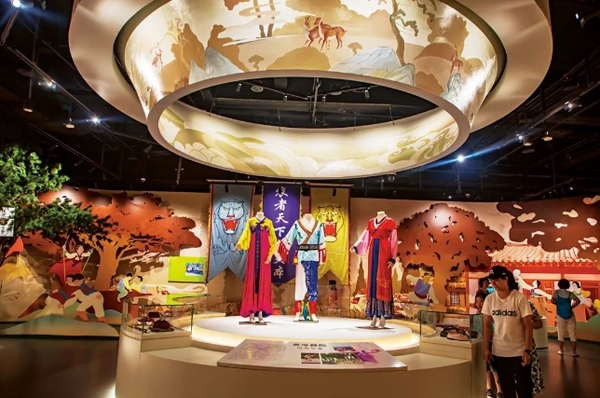
Historical Development
Ethnic Koreans in China date their history back to the late Ming (1368-1644) and early Qing (1616-1911) dynasties. People from the Korean Peninsula settled in China's northeastern region, and they gradually formed an ethnic group that retained many elements of the Korean culture. At present, ethnic Koreans in China live in compact communities along the Tumen, Yalu, Mudan, Songhua, Liaohe and Hunhe rivers.
White is the most favorite color of ethnic Koreans in China, who regard the color as a symbol of purity, kindness, nobility and holiness. Through the people's preference of white color, one may get a glimpse of their aesthetic taste and their distinctive characteristics of favoring tranquility and simplicity.
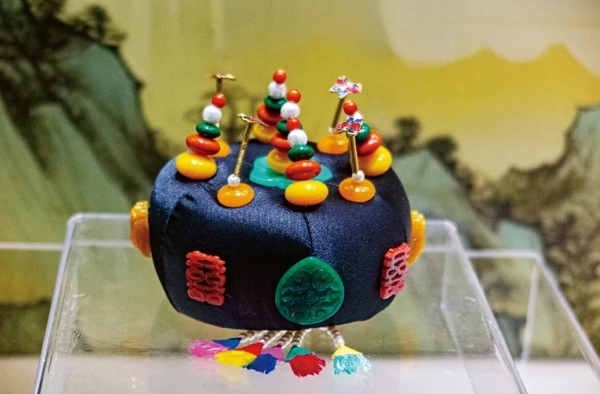
Through a long history of development, ethnic Koreans' clothing has formed its own characteristics. In the late third century, aristocratic ethnic Korean men developed a liking for short jackets and baggy pants, while noble women were fond of wearing hip-length tops and long skirts. Later, under the influence of the Mongolian clothing culture, ethnic Korean women's blouses became shorter and skirts were raised to the waist. In the 15th century, the waistline became even higher, basically evolving into what it looks like today.
Ethnic Koreans in China have mainly kept the folk clothing style of the Joseon Dynasty, the last unified feudal kingdom that ruled the Korean Peninsula from 1392 to 1910. The people have everyday clothes, ceremonial dresses, and special outfits for dance performances. Their ethnic clothes feature tops (with side openings), which are fastened with cloth strings.

Colorful Costumes, Adornments
The traditional outfits of ethnic Korean men in China usually consist of short plain-colored jackets called jeogori. The cropped tops have left lapels with an oblique opening, and loose-fitting sleeves, and are fastened with ribbons on both sides of the front. The edges of the opening are covered with white cloth that can be removed when washed. Many Ethnic Korean men wear waistcoats with buttons. The waistcoats' surfaces are made of satin, and the linings are usually made of fur or cloth. Every waistcoat has three pockets and five buttons.
The men usually wear jackets and baggy trousers, mostly in white. When wearing such pants, they find it comfortable to sit cross-legged on cushions or mats on the floor. There are also strings on the bottom of trouser legs, so the wearers can roll trouser legs up when they plough paddy fields.
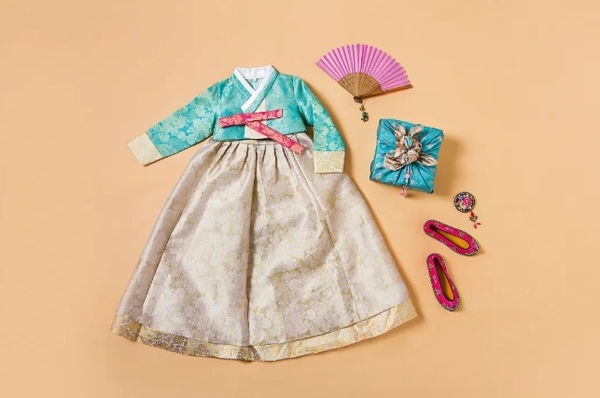
When the men go out, they usually wear formal hats and long robe-like overcoats. Such ceremonial overcoats display male maturity and masculinity. Nowadays, young ethnic Koreans in China rarely wear the traditional robes, while seniors still preserve the tradition of wearing traditional costumes on ceremonial occasions.
Compared with men's wear, the clothing of ethnic Korean women in China is more colorful. Traditional everyday outfits for the women are made up of tops and long skirts. An ethnic Korean woman in China usually ties a cloth bow under her right shoulder. Through the women's traditional costumes, one may get a glimpse of their aesthetic psychology.
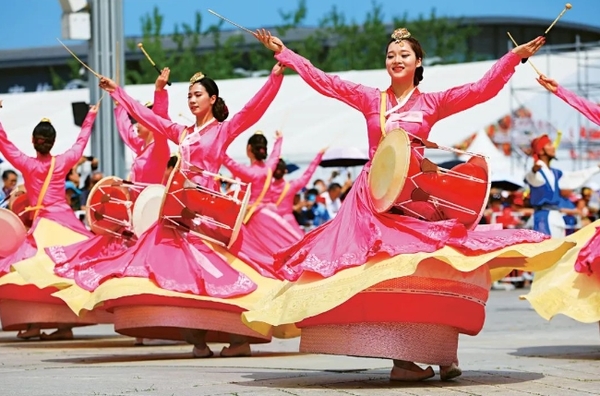
The women's tops, which cover the arms and the upper bodies, are fastened by strings on the right chest. Tops for young women are rimmed with silk edges at the necklines, cuffs and lapels. The tops' colors are usually soft and light, including yellow, white and pink.
The women's skirts are called "chima" in the Korean language. Differing in length, some skirts extend all the way from the chest to the ankles, and some to the knees. Chima is usually made of silk in various colors. The loose A-line skirts have ruffles at the waists.
Bright pleated skirts and skirts reaching the knees, paired with colorful ribbons, are favorites of many young women. Middle-aged and elderly women wear long skirts and wrap-round skirts. The wrapround skirts, which look like fans in shape, have waistbands and skirt belts. The upper ends of the skirts are narrower with many ruffles. The women wear underskirts underneath their skirts.
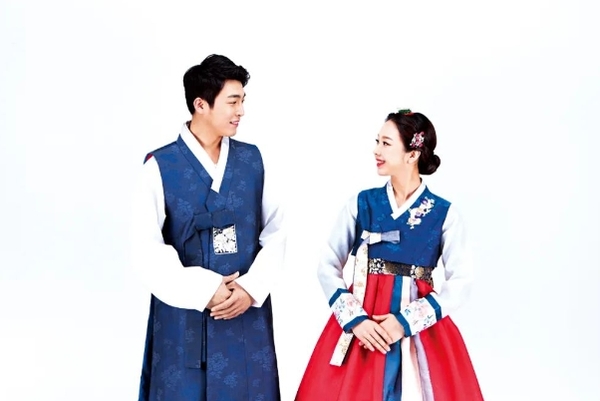
In the choices of colors and styles, women's clothing differs by age and occasion. Before marriage, women mostly wear yellow tops with multi-colored stripes on the sleeves, and bright scarlet skirts. After they get married, they change to green tops and red skirts.
Many ethnic Korean children in China wear colorful clothes. The aesthetics preference is said to be inspired by rainbow. In the eyes of ethnic Koreans in China, rainbow symbolizes light and beauty. The people believe rainbow can evoke a child's innocent dream.
Ethnic Koreans in China usually match their traditional clothing with rubber shoes, which look like modern-day pump shoes with low heels. Made of artificial leather or rubber, the shoes feature turn-up toe caps. They are soft and comfortable to wear. Ethnic Korean men's shoes are generally black, while women's shoes are mostly white, sky blue or green.
The women's adornments are also exquisite. The adornments consist of headdresses and waist ornaments. Headwear includes hairbands and hairpins, while waist accessories include belts and purses, many of which are delicate handicrafts.
In traditional clothing, ethnic Koreans in China like to wear a tassel under the bow on the chest. The decoration on the tassel is mostly a carved piece of jade or an ornamental silver sword.
Photos from VCG
Source: China Today
(Women of China English Monthly February 2024)
Please understand that womenofchina.cn,a non-profit, information-communication website, cannot reach every writer before using articles and images. For copyright issues, please contact us by emailing: website@womenofchina.cn. The articles published and opinions expressed on this website represent the opinions of writers and are not necessarily shared by womenofchina.cn.








.jpg)

 WeChat
WeChat Weibo
Weibo 京公网安备 11010102004314号
京公网安备 11010102004314号